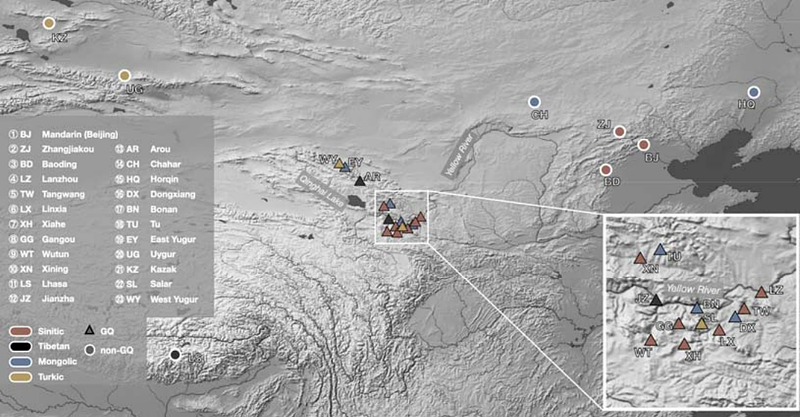Disentangling complex language contact and admixture in the broad Gansu-Qinghai region

Disentangling complex language contact and admixture in the broad Gansu-Qinghai region
Jin, H.; Tao, Y.; Yang, C.; Yang, S.; Sun, W.; Linguistic Silk Road Research Consortium, ; Xu, D.; Zhang, M.
AbstractLanguage evolution in the Gansu-Qinghai (GQ) region provides a key perspective for understanding cultural development along the Silk Road. Previous genetic and archaeological studies revealed complex multiethnic interactions shaped by migration and sociocultural exchange. However, the lack of structured linguistic data and computational tools for studying language contact has limited rigorous analysis of sociocultural evolution in this area. Here, we presented a new hybrid dataset of phonological and morpho-syntactic features from languages sampled across the GQ region. We introduced a computational framework to assess language contact and admixture, allowing us to quantify interaction among GQ languages and trace their origins. Our results showed that GQ languages have distinct contact patterns in their phonological and morphosyntactic systems, with some languages exhibiting clear evidence of mixture. Using a new statistical method, Trait Sharing Test (TS-TEST), based on tree topology, we identified significant influences from Sinitic, Tibetan, Mongolic, and Turkic languages in shaping GQ linguistic diversity. These findings highlight the GQ region as a linguistic convergence zone on the Silk Road and provide a foundation for quantitative research on language contact and admixture. Our work strengthens the linguistic perspective on cultural evolution in the GQ region and supports future interdisciplinary studies integrating languages, genes, and material cultures.